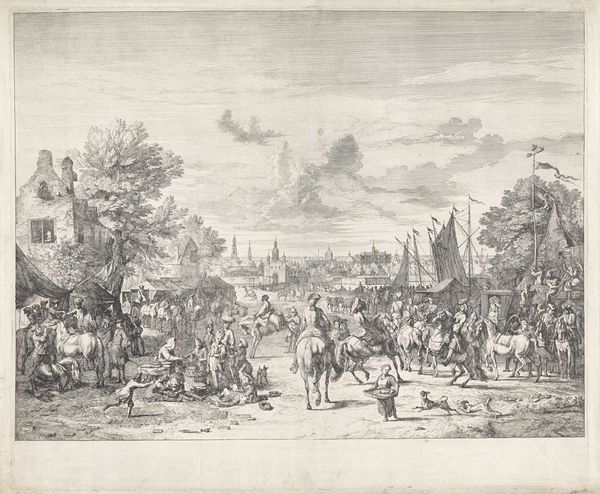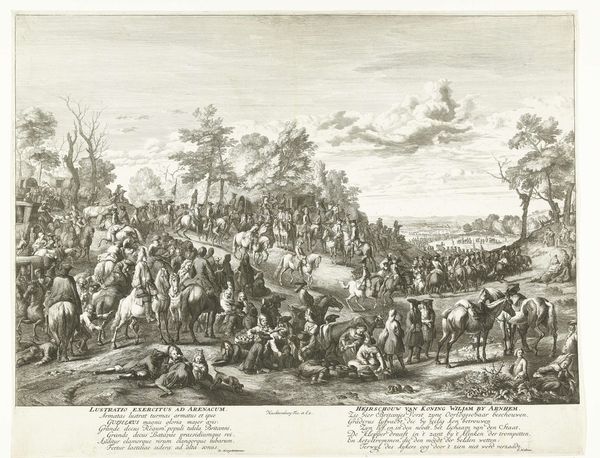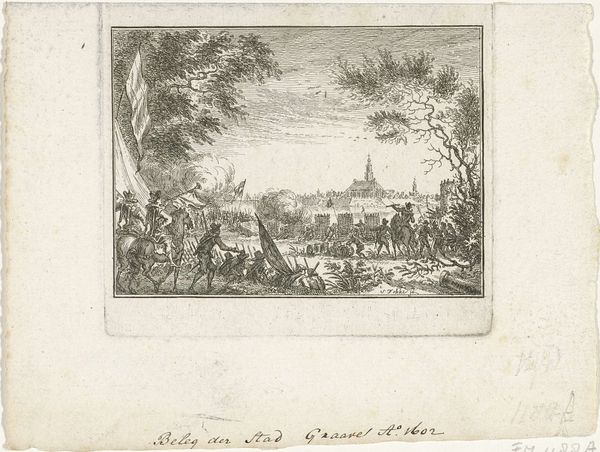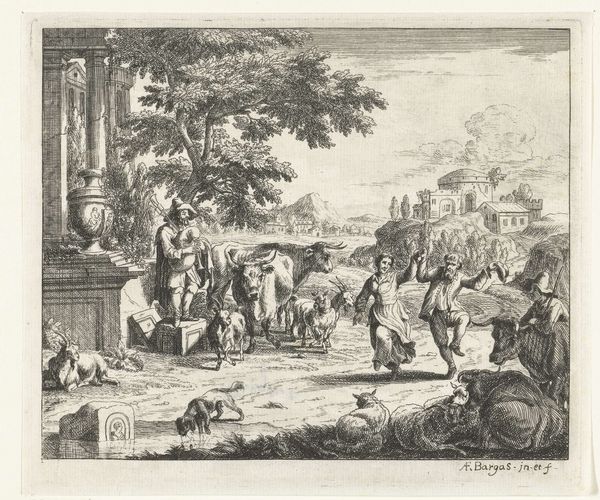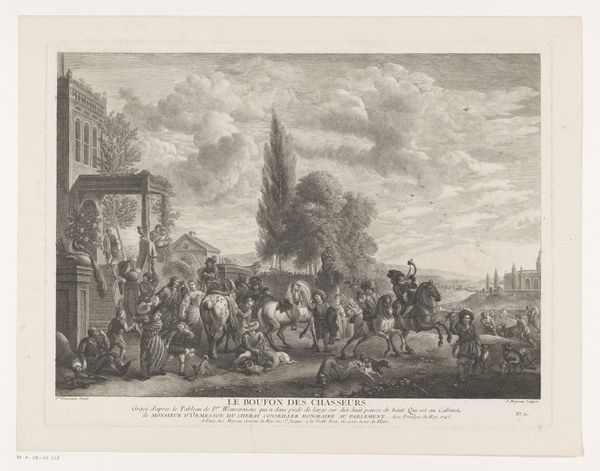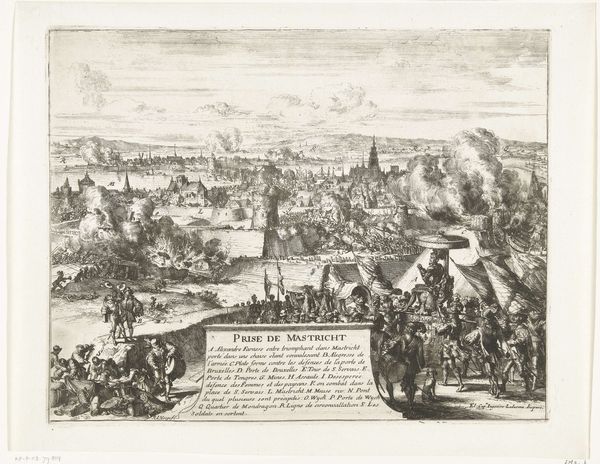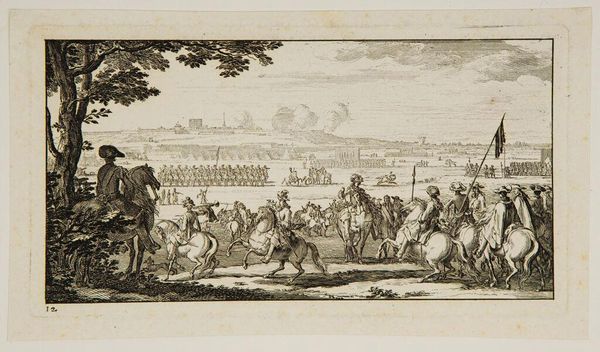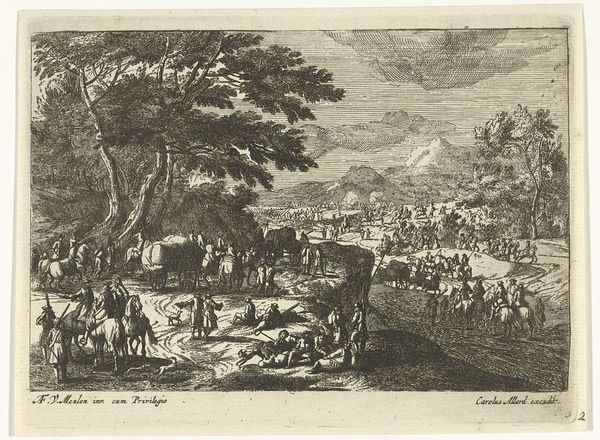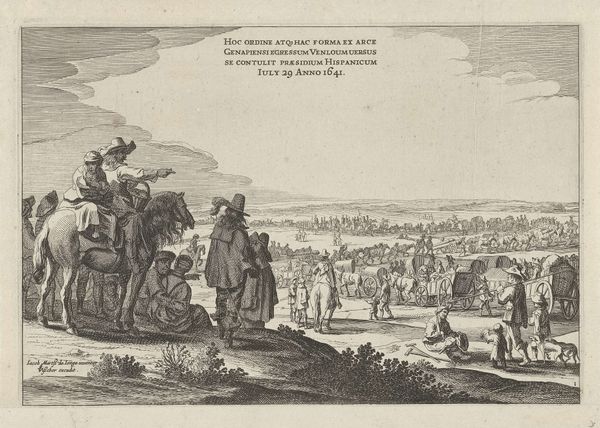
print, engraving
#
baroque
# print
#
horse
#
cityscape
#
genre-painting
#
engraving
#
realism
Dimensions: height 471 mm, width 592 mm
Copyright: Rijks Museum: Open Domain
Curator: This print, held at the Rijksmuseum, is entitled "Paardenmarkt," dating circa 1702 and attributed to Jan van Huchtenburg. The medium is listed as engraving, offering a fascinating glimpse into urban life of the period. Editor: My first impression is the absolute flurry of detail, the composition alone is impressive. There’s so much visual information crammed in here, the energy of the horse market is almost palpable even now. Curator: The intricate rendering indeed captures the Baroque fascination with elaborate display. Consider how the formal arrangement of figures guides our eye through the scene, carefully balancing light and shadow. Semiotically speaking, this engraving operates as a structured system, its elements interwoven to create a singular representational whole. Editor: And yet those elements themselves are steeped in symbolism. The horses, of course, represent power, status and the military, reflecting Dutch trade, governance, and the period’s engagement in several major European conflicts. But consider the smaller scenes too—people selling wares, others haggling – these tell stories of a burgeoning society, the rise of a mercantile class finding joy and enterprise in trade. Curator: An astute observation. Note, however, the carefully controlled perspective lines, drawing the viewer deeper into the urban space, as if emphasizing rational order imposed on the seeming chaos. It's not mere replication, but a calculated representation following particular stylistic dictates. Editor: But beyond those formal choices, I think one cannot dismiss the symbolism imbued by the hustle and bustle. The scene reveals layers of Dutch cultural identity. We are talking about freedom and independence, achieved in the previous century and on display in these crowded market squares. It’s a tapestry of daily rituals. Curator: Your highlighting of the interplay of form and culture encourages the interpretation of art history beyond theoretical abstraction, leading us to an encounter of history that extends outside art as a structured form. Editor: Precisely, and from a different view, we witness this beautiful capture of human rituals. It takes us back and offers something we can remember even now.
Comments
No comments
Be the first to comment and join the conversation on the ultimate creative platform.
